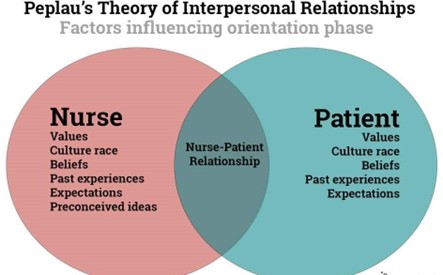Which nursing theorists promoted the interpersonal theory between patient and nurse?
Mary Mahoney
Hildegard Peplau
Hatle Bessment
Linda Richards
The Correct Answer is B
Hildegard Peplau was a nursing theorist who promoted the interpersonal theory between patient and nurse. She believed that nursing is a therapeutic, interpersonal process that involves the development of a close and personal relationship between the nurse and the patient. According to her theory, the nurse should understand the patient's needs, feelings, and behaviors to develop a personalized care plan that would facilitate the patient's recovery.
Mary Mahoney was a nurse who broke racial barriers and became the first African American registered nurse in the United States.
Hattie Bessment was a nurse who promoted nursing education and research.
Linda Richards was the first professionally trained nurse in the United States and established the first nursing school in Japan.
While these nurses contributed significantly to the nursing profession, they did not specifically promote the interpersonal theory between patient and nurse.

Nursing Test Bank
Naxlex Comprehensive Predictor Exams
Related Questions
Correct Answer is A
Explanation
This statement by the student nurse demonstrates the technique of stating the implied and seeing the client's behavior. The student nurse has observed the client pacing the halls and having a tense look on their face, which implies that the client may be feeling anxious. By stating this observation to the client, the student nurse is validating the client's experience and opening a dialogue about their feelings. This technique can help the client feel heard and understood and can facilitate a therapeutic relationship between the client and the nurse.
Option B is an open-ended question that can encourage the client to share more about their feelings, but it does not demonstrate the technique of stating the implied and making an observation about the client's behavior.
Option C is a statement that may be perceived as judgmental or confrontational and does not demonstrate the technique of stating the implied and making an observation about the client's behavior.
Option D is a statement that is focused on the nurse's agenda rather than the client's needs and does not demonstrate the technique of stating the implied and seeing the client's behavior.
Correct Answer is B
Explanation
The development of psychotropic medications in the 1950s was a major breakthrough that helped to facilitate the deinstitutionalization movement. These medications helped to manage the symptoms of mental illness and allowed many patients to be treated in community-based settings rather than being confined to institutions. This shift towards community-based care was further supported by the Community Mental Health Centers Act and other initiatives.
Whether you are a student looking to ace your exams or a practicing nurse seeking to enhance your expertise , our nursing education contents will empower you with the confidence and competence to make a difference in the lives of patients and become a respected leader in the healthcare field.
Visit Naxlex, invest in your future and unlock endless possibilities with our unparalleled nursing education contents today
Report Wrong Answer on the Current Question
Do you disagree with the answer? If yes, what is your expected answer? Explain.
Kindly be descriptive with the issue you are facing.
